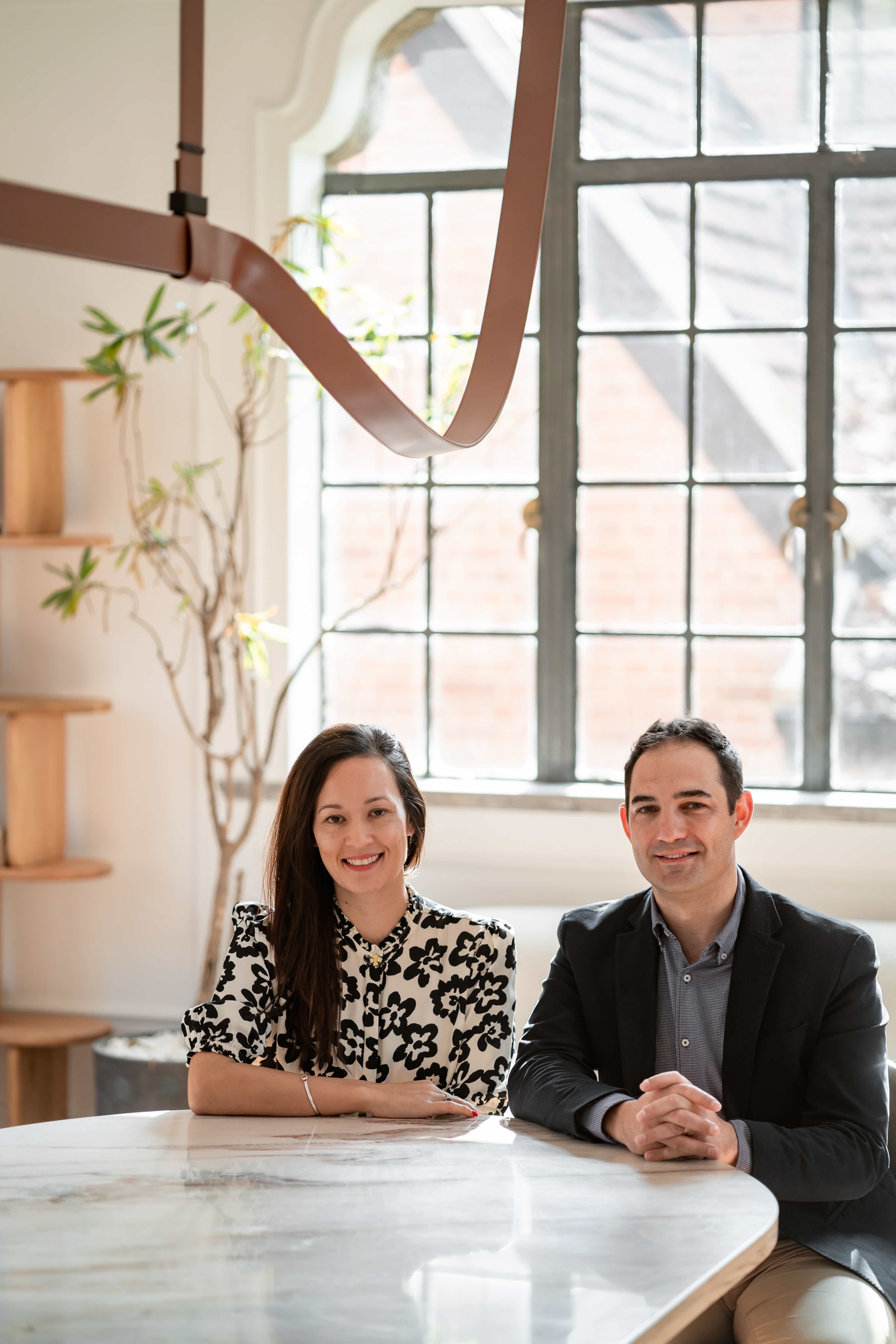
Kind of a big deal though they don’t know it themselves (or if they do, they prefer to stay low-key), this Kiwi couple can be credited with making Shanghai that much cooler. Many of our favourite F&B spaces and businesses spread across Shanghai, Beijing, Shenzhen, Hangzhou, Ningbo, Suzhou and Hong Kong have hcreates interior design's touch, that metropolitan magic that, when juxtaposed with classical China, becomes something more than the sum of its parts.
Hannah and Hadleigh Churchill live in Jing’an District, which puts them smack in the middle of the action. Him, a bastion of warmth, and her, a bohemian beauty, moved to Shanghai almost 15 years ago and, like many of us, got hooked. Here they are to tell us why they’ve stayed.
First impressions of Shanghai… go!
Hannah: Vibrant, crazy, ever-changing. A place where you can feel the opportunity. Relationships are made fast and people are open to new ideas. Upon getting off the plane for the first time in 2009, I definitely thought, “concrete and grey,” but as we travelled in, I was surprised to see the tree-lined streets and the mix of historical and new buildings, especially in Xuhui, which created a smaller city feel.
Hadleigh: It was such a huge change from little old Wellington, New Zealand. There are just people everywhere. I was fascinated by all the random things that I would see going down the street. The rustic old and the futuristic new. It seemed like a city where anything was possible.

Why do you do what you do?
Hadleigh: Shanghai has changed a lot in the time we have been here, but when we first arrived, the international food scene was still developing: no craft beer, no coffee shops, and most expat socialising seemed to centre around sports bars and Irish pubs.
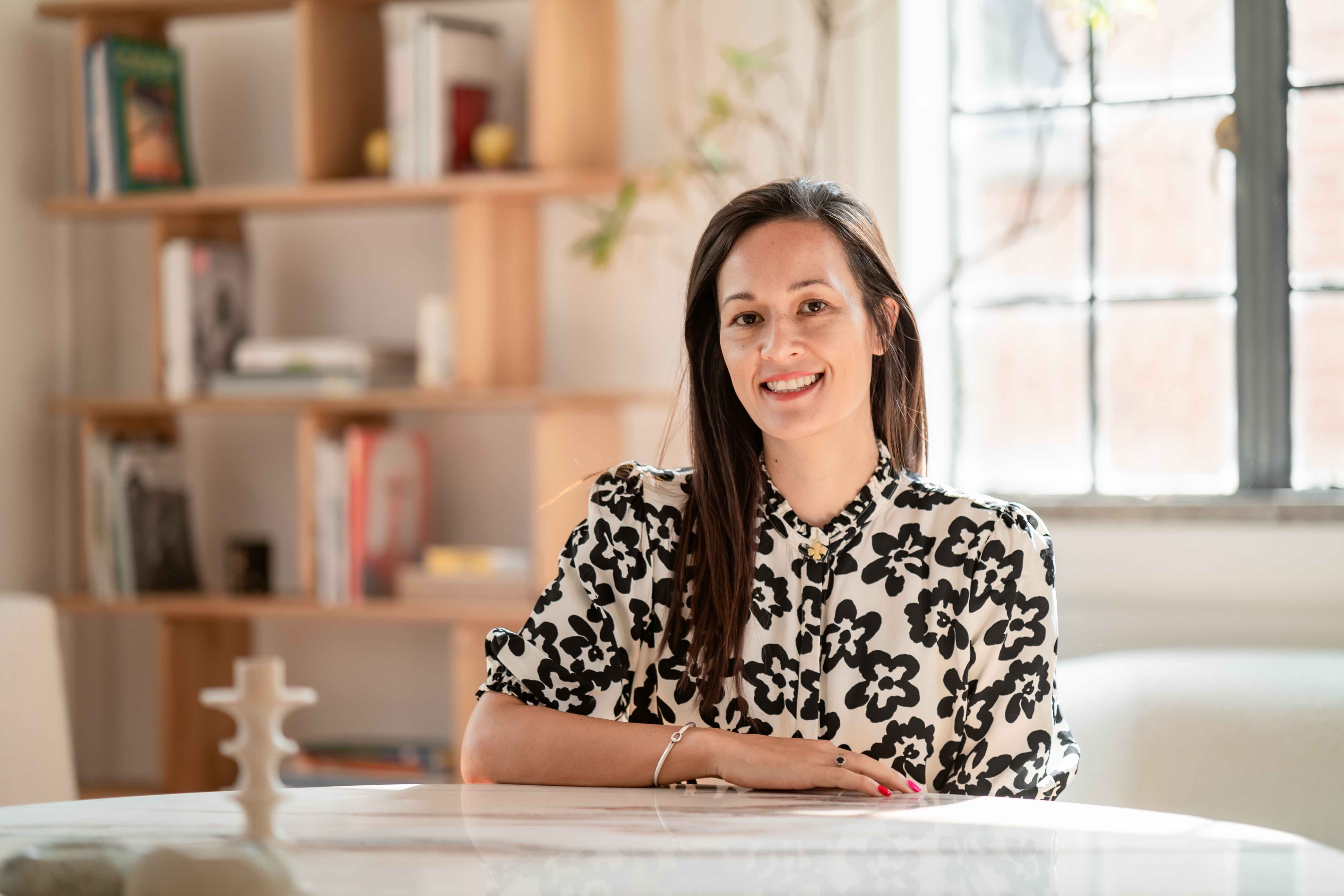
Hannah: We hadn’t intended to start a design studio, but were asked by some friends to help, things just escalated from there. Our first full renovation project was an Italian restaurant on Dongping Lu called D.O.C. People loved the concept and the design and it felt like we had brought something to the city that was on par with other venues around the world. From that moment, we were hooked. We realised we could create places that would make Shanghai even cooler. Every restaurant, café, ice cream shop… We help our clients create new communities all across Shanghai. For us, community is what makes Shanghai such a livable place. When clients come to us with projects that are going to bring something new and different, we always get excited.
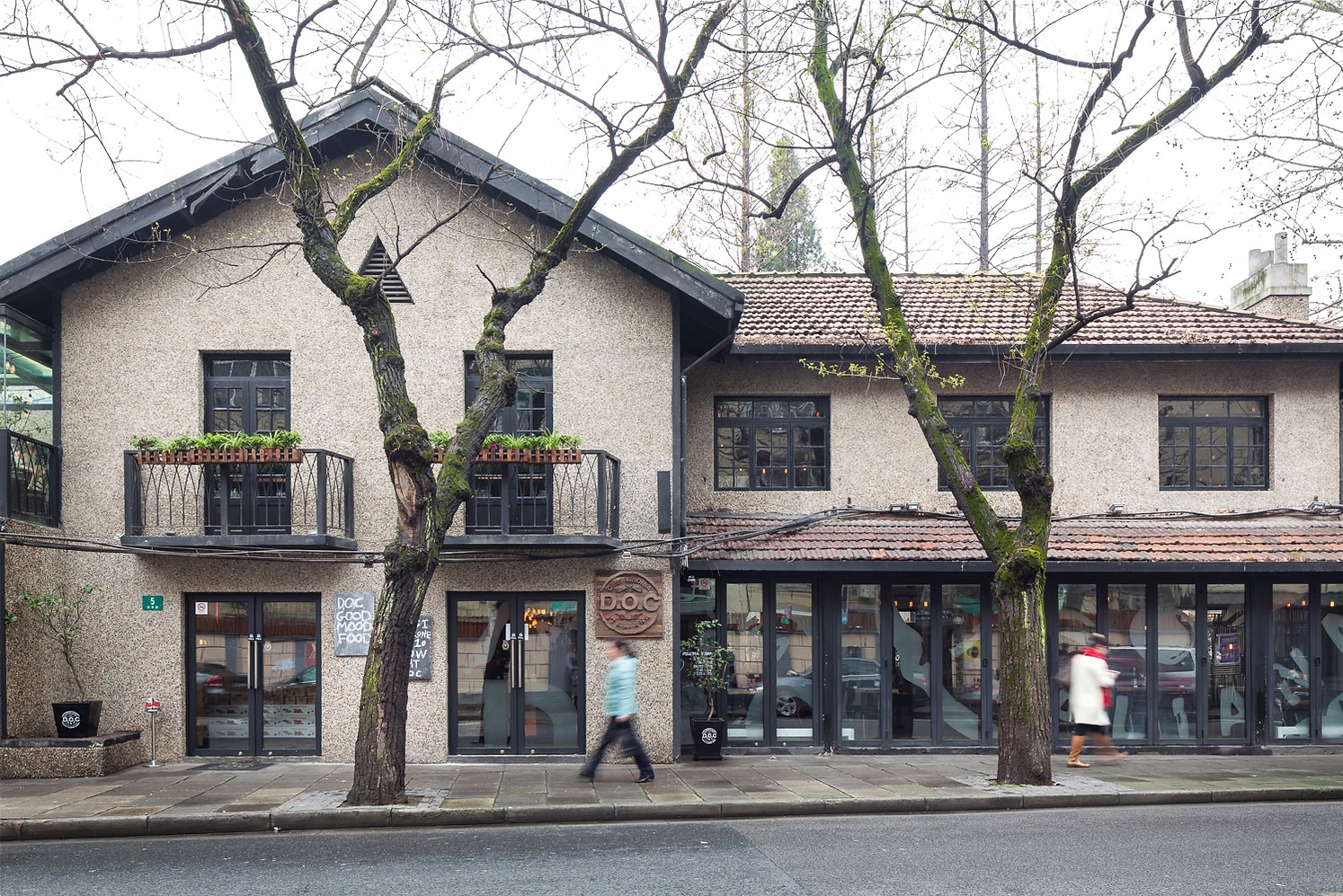
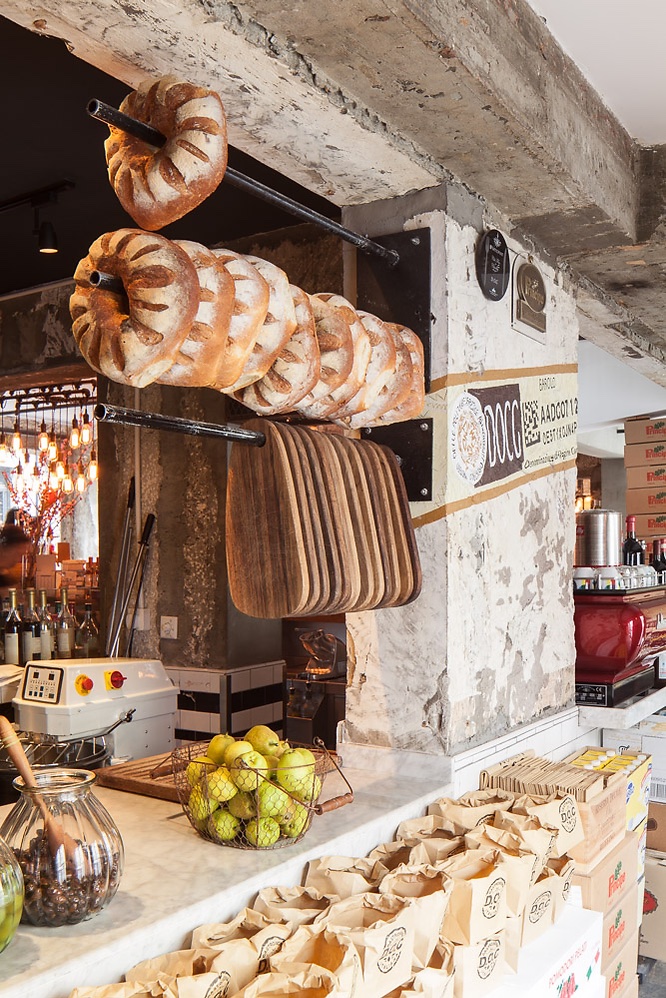
D.O.C. on Dongping Road. Photos by Seth Powers
Does China’s relationship with fengshui often shape your projects?
Hadleigh: We have learned to ask about this in the first meeting. Fengshui has a huge impact on design, so we adapt and integrate feedback during the concept phase.

Behind the scenes of a project site with hcreates
But if the Fengshui Master comes at the end, it’s a bit of a nightmare, as there can be massive time and cost changes. It is usually more of our office projects — fengshui can dictate where entrances are located and where managers where should sit. We had one project in Beijing where we had to remodel the entire entranceway (so it didn’t directly face the door across the street), and there’s another where they need to dig up the floor to reorientate a 2-metre-long brass strip buried in the concrete once every two years.
It's less common in restaurant design, but we did once have to reposition a door so that it allowed the money from neighboring ATM to flow into the space and cancel the second door so that the money couldn’t get out.
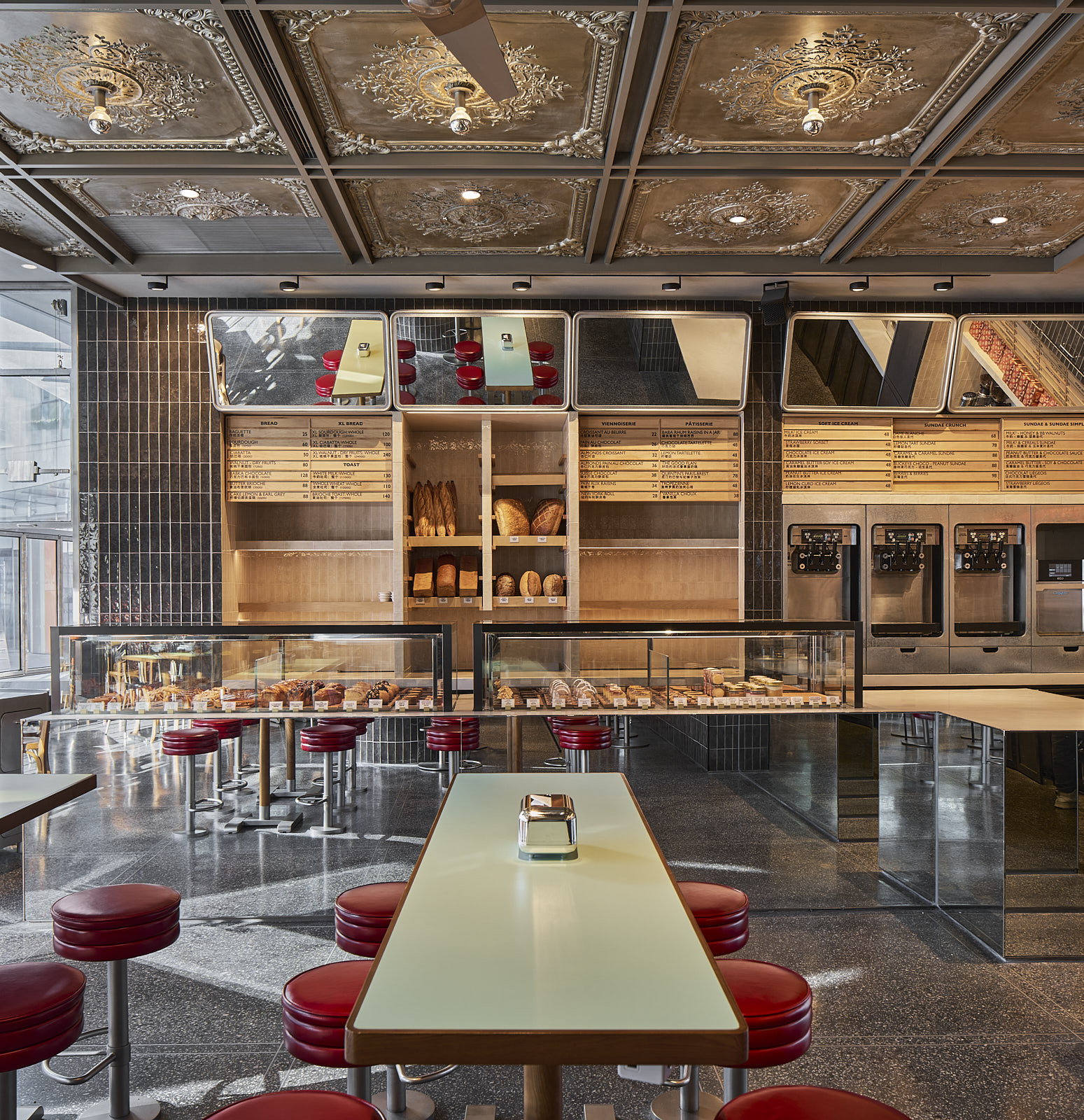

Roodoodoo (top) and Black Rock (bottom) designed by hcreates
What are some of your Shanghai projects our readers should know about?
Hannah: We recently completed RooDooDoo, a concept by Paul Pairet in IFC Pudong. It’s an all-day diner/bakery/ice creamery that sees an eclectic mix of retro, sleek and French elements, a space that moves from breakfast to after-dinner drinks. We are excited to show more of this project in the coming weeks.
There’s also Black Rock, an intimate whiskey bar on the corner of Yanan Road and Fumin Road. It has a unique tree log centre piece that can hold about 52 litres’ worth of whiskey flavoured by the different oak lining each of the two channels. Here, we explored black textures and hues warmed by oak timbers and whiskey coloured ambers. It’s a great place for cosy drink with friends, especially on cold evenings!
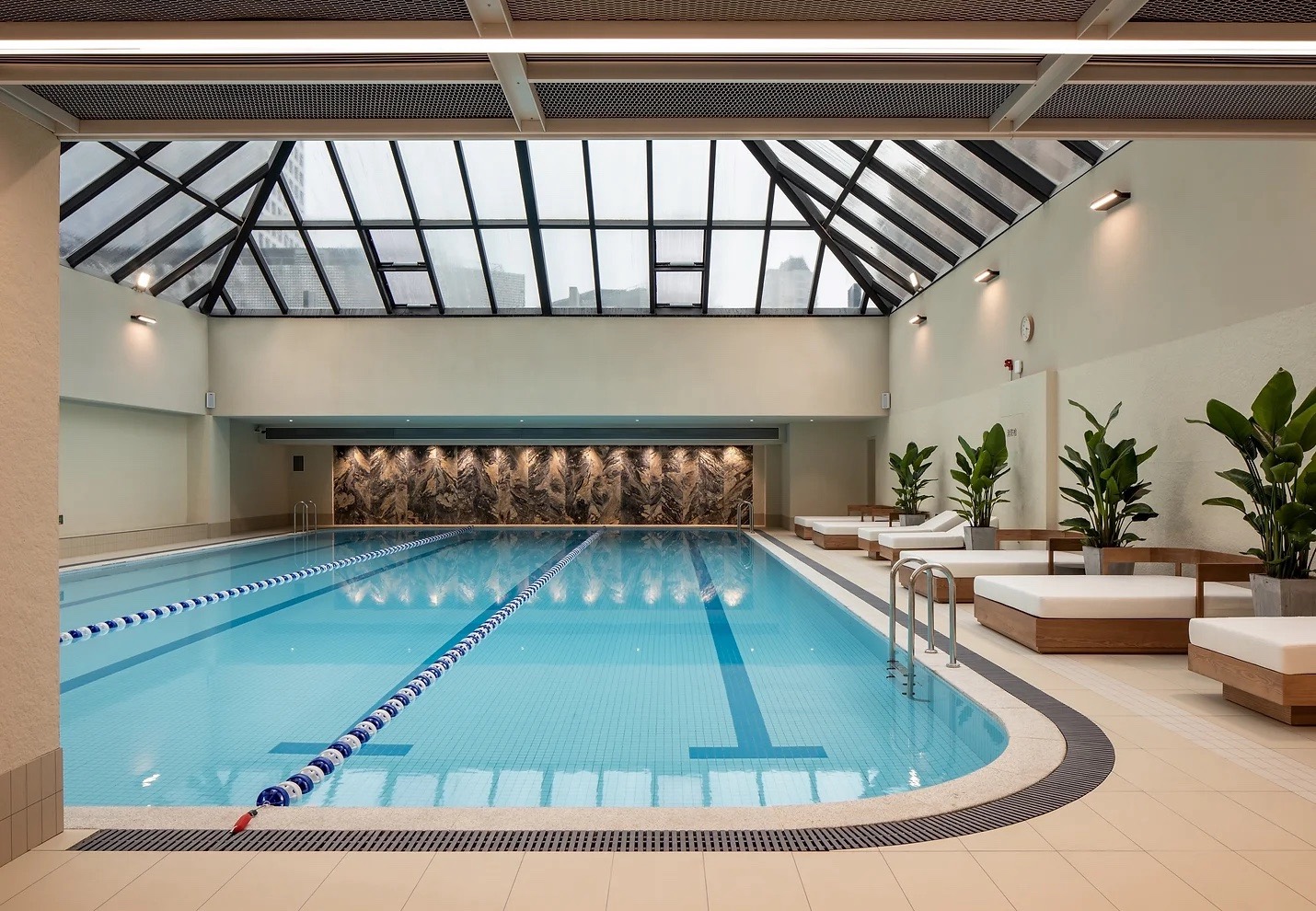
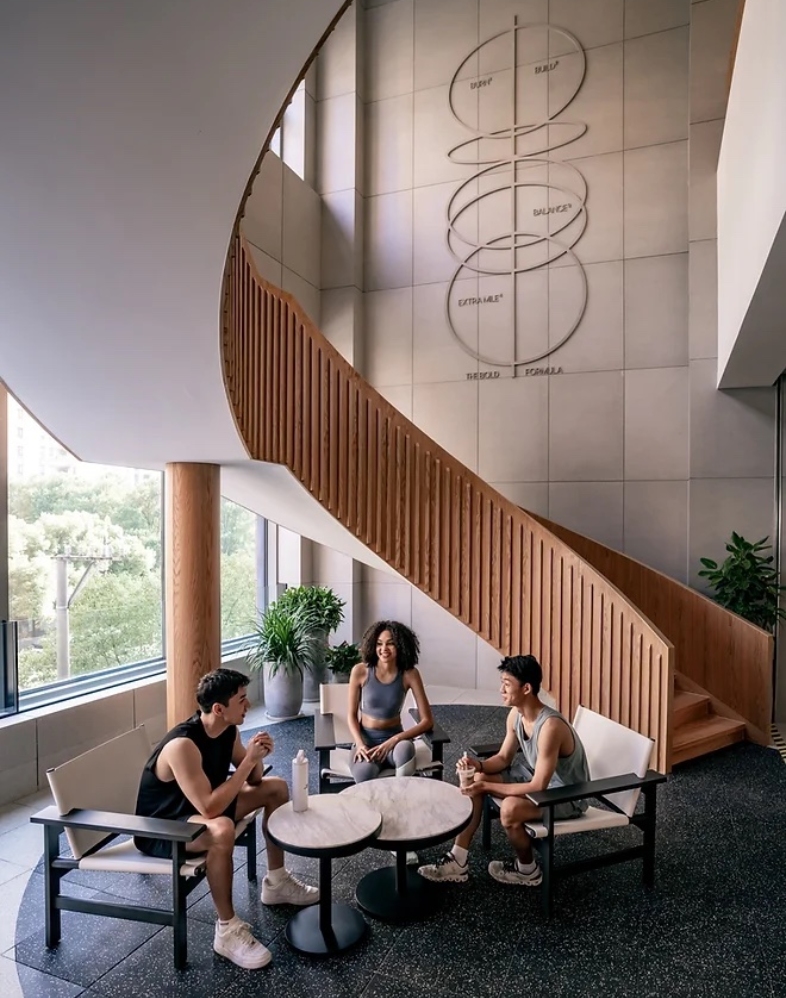
Bold Wellness Club. Photos by Graeme Kennedy and Brian Chua
We also do lifestyle and fitness spaces. Bold Wellness Club opened on Madang Road this year. It’s spread out over three floors and includes a café and glass-roofed swimming pool. Super sleek with a minimalistic palette of greys and blacks and linear lighting. The design creates an emotional journey over the three floors, from relaxed to energy boost and finally to restorative as you move through the spaces.
One of the most present brands for Shanghai natives is Luneurs. We designed most of the Luneurs stores in Shanghai over the past half decade, and it has been great to watch them grow and develop as a brand over the years.
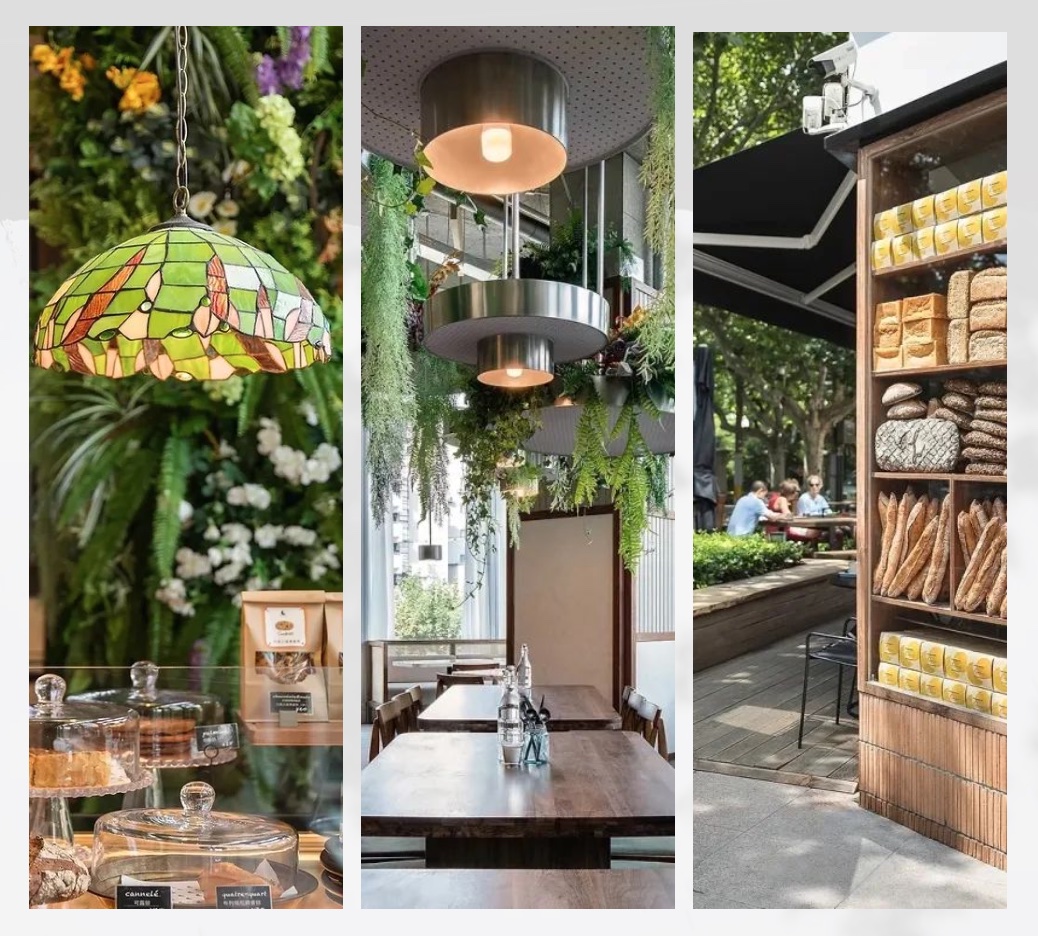
(L-R) Luneurs le garde-manger, Luneurs Les Halles and Luneurs Community
Quite a few of your projects have been recognised by the top dogs. Do design awards matter?
Hannah: This is an interesting question, as we all love to have our work validated, especially when so much heart, soul and energy has gone into a project. So yes, design awards matter; they help create awareness of your brand within the industry and attract clients. Although we are actually happier if the project is doing well on Dianping, because that means customers like it and therefore the business is more likely to succeed.
We have recently been included in the Architectural Digest AD100, which recognises the top 100 designers in China. It’s nice to be on that list with all of the big names of design in China.
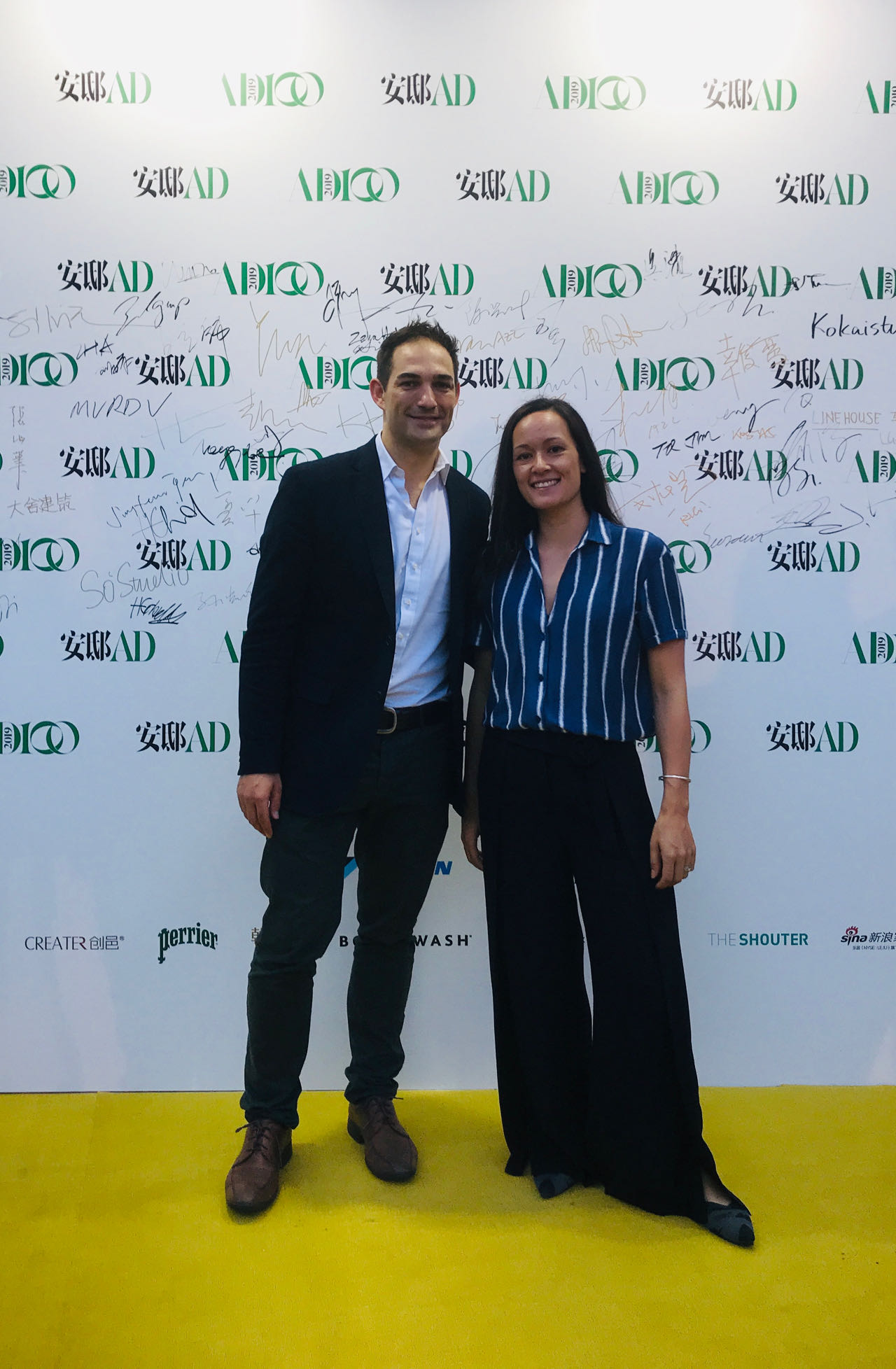
The Churchills at the AD100 2023
Do you ever turn down clients and if so, why?
Hadleigh: We are a small studio, so we can only take so many projects each year. (When first meeting the clients of) each potential project, it’s a bit like speed dating. If we get a good vibe, it’s usually a sign that they are going to be good to work with, and that we are much more likely to enjoy the journey together. Projects are always quite fast in China, so we have to work pretty intensely with the client through the design and construction phases.
What is the biggest misconception about what you do?
Hadleigh: I think people see a space and assume that we just come up with a concept. However, the concept is only the start. You have to know how to translate it into drawings, how the design is actually going to be built, and then you need to be involved during the construction to make sure the concept is coming to life the way the client expects.
Hannah: Some clients see our successful projects and say they just want that, to “give us the same.” What the more inexperienced groups or clients don’t realise is that a successful project takes a team. Interior is just one part of it, but the overall amazing experience you have at a restaurant or space involves a whole team of passionate consultants, food, branding, service and operations staff. So we often help to bring these other specialists into our projects.
How long is the turnaround period for most projects?
Hadleigh: For our F&B projects, most people call us when they have already found a space, and the standard terms of the lease will be 30 days of free rent. Given that construction normally takes 45 days, we will already be behind on the timeline — and we haven’t even had a conversation about the design or created the drawing set! Ideally, we will have as many days for design as for construction, but this is wishful thinking. In a nutshell, a project typically starts and finishes within three to four months.
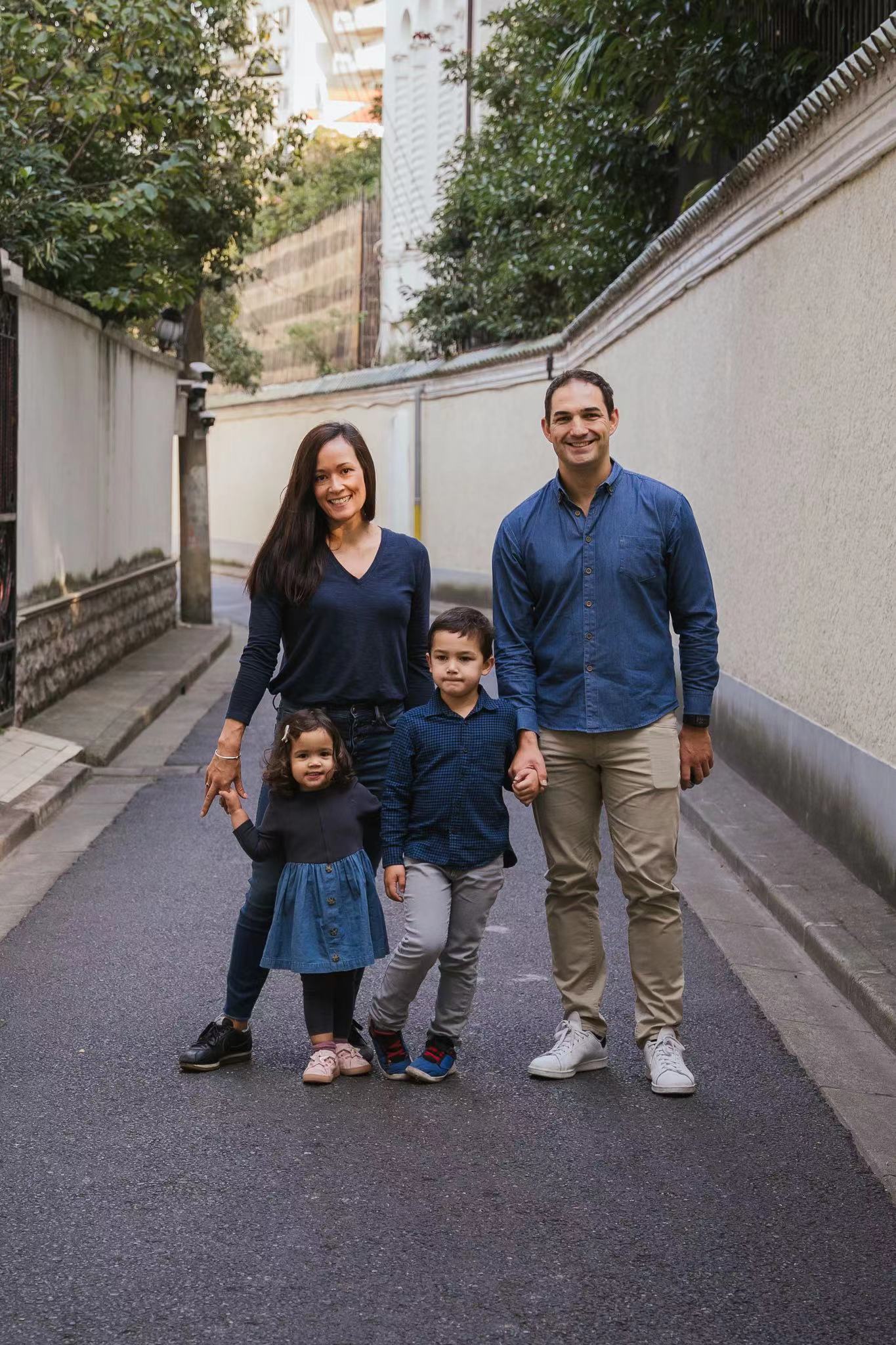
Hannah, Hadleigh, and their children Adalyn and Harrison
What is the most rewarding part of what you do?
Hannah: Being able to continue to enjoy our spaces with others after they are designed. It’s very satisfying to be able to go back with family, friends, clients or colleagues and to hang out, eat and drink in the concepts we helped create. Seeing others enjoy these spaces and the businesses be successful makes you feel very proud.
Hadleigh: We get to work with some very talented and creative people who are really passionate about what they are doing and it’s a great privilege to be part of their journey.
All images courtesy of hcreates
